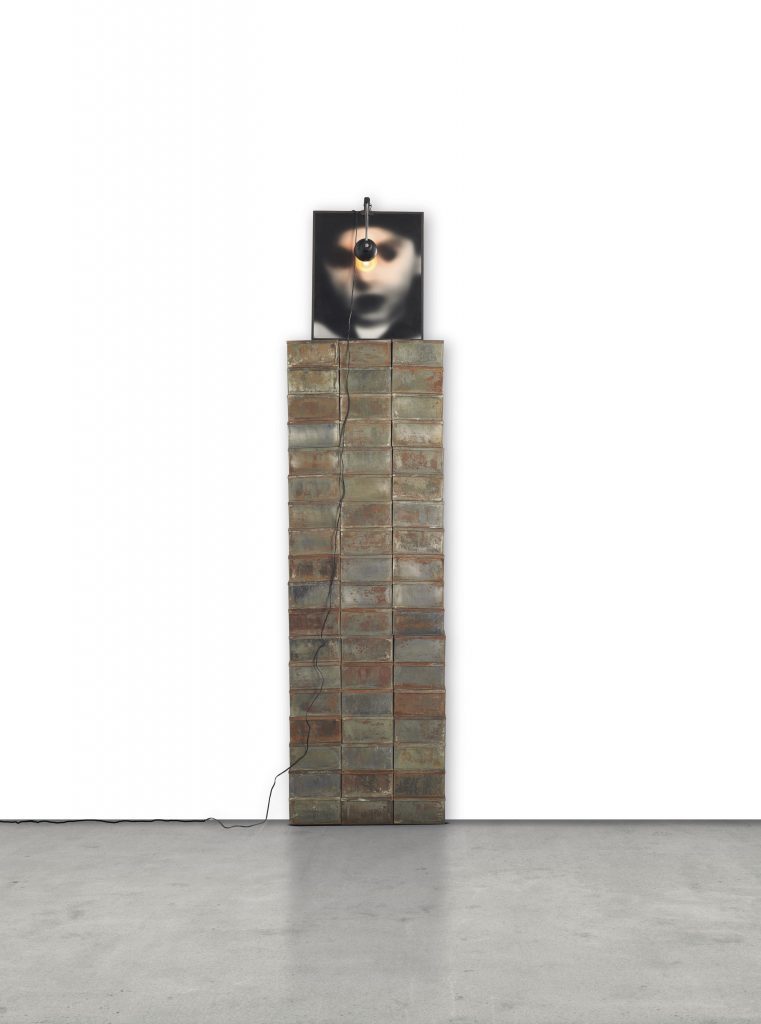Christian Boltanski (b. 1944)
Reserve, 1989
Fifty-four tin boxes, gelatin silver print and lamp
Courtesy of the Leonid and Tatiana Nevzlin Collection
Christian Boltanski, one of the most important contemporary French artists, is known for his photographs and installations. Reserve is a fine example of his installation work: it comprises everyday items, and deals with the theme of death, including veiled references to the Holocaust. In this work Boltanski also questions the boundaries between absence and presence, disappearance and remembrance.
Must Know
Christian Boltanski (born 1944) is a French sculptor, photographer, painter and film maker, most well known for his photography installations and contemporary French Conceptual style.
His themes explore the themes of loss and death perceived through the prism of memory. This installation memorializes an unknown person and at the same time raises the question about the veracity of the photograph. His work focuses on vernacular photographs of children as the means to convey the transience of life and awaken a collective consciousness of the dead. here childhood assumes a vanitas role representing temporality and an irrevocable loss reclaimed by memory. The work is an alterlike design and the lightbulbs substitute votive candles. The light illuminates his image and reminds us of yahrzheit candles honoring and remembering the dead. The empty rusted tin biscuit boxes,are French biscuit tins that children put their precious things in them. It is, at the same time a minimal object and something that is very close to people. These tins are a fixture in Boltanski’s works, holding childhood treasures and memories-and unwritten histories of unrealized lives.
In his installations and mixed-media works he uses photography and found objects to question memory and individuality. An awareness of mortality, and of the general tenuousness of human existence, haunts his art
Some great quotes:
“The big problem in art is being able to tell the story of your own village, while at the same time having your village become everyone’s village. I want to be faceless. I hold a mirror to my face so that those who look at me see themselves and therefore I disappear.”
“In my work I try to speak about very universal things—about life and death, about being or not being guilty—very general problems but moral problems, philosophical relationships. For example, a large part of my work now, and I think always, speaks about the Holocaust. And I think for me it is very important. But in another way I think it’s only part of my work. The Holocaust is only an example of dying. Of common and impersonal dying. But people who don’t know I’m interested in the Holocaust can see something else. And I want them to see something else.”

